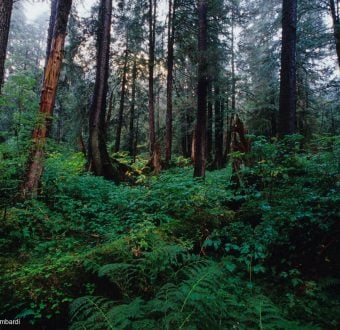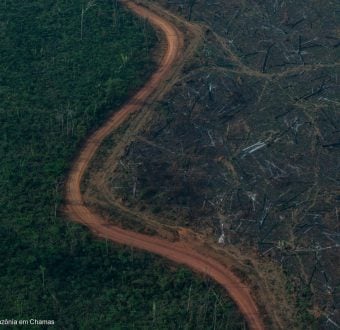“While the Forest Service is patting itself on the back, the
reality is there is little to celebrate when it comes to the state
of our forests,” said Pamela Wellner, Greenpeace senior campaigner
and co-author of the report. “With only five percent of the
nation’s ancient forests left in the lower 48 states, keystone
forests represent our last best hope for saving the country’s
natural heritage. Unfortunately, they are threatened by the very
agencies that are responsible for them: the Forest Service and the
BLM.”
The following areas were identified as keystone forests: the
Maine Woods, the Blue Ridge-Appalachia, the Florida Panhandle, the
Upper Great Lakes, the Mogollon, the Sierra, the Klamath-Siskyiou,
the Pacific Northwest Volcanic, the North Cascades, the Northwest
Rockies and the Alaska Coastal Temperate Rainforest. Unique maps
show the condition and ownership of the land within each
forest.
“These maps draw together for the first time the latest
scientific studies of forest fragmentation, road density,
biological diversity and health of plant and animal communities,”
said Bill Haskins, GIS manager of the Big Sky Conservation
Institute and creator of the forest maps. “They provide a
penetrating look at the damage already done, and a prescription for
saving and restoring what’s left of our most diverse native
forests.”
In addition to profiling each keystone forest, the report
details how the Forest Service and BLM have allowed, and even
encouraged, rampant industrial exploitation of the nation’s forests
at taxpayer expense. Under the Bush administration, this
mismanagement is escalating at an unprecedented rate. Most
recently, the administration announced on December 22 that it was
opening up all national forests to greater logging and mining.
America’s Keystone Forests also provides a blueprint for
saving the nation’s remaining forests. In the short term,
Greenpeace is calling for a moratorium on large-scale industrial
logging and road-building in all forests administered by the Forest
Service and BLM. In the long term, America’s best forest lands,
starting with the keystone forests, must be given greater
protection, and the missions of the Forest Service and BLM must be
refocused on restoration and conservation, not commercial
exploitation.
Local spokespeople are available for comment for each keystone
forest region. To read the report and view the maps, visit www.greenpeaceusa.org/keystoneforests/.
Photos available at http://usaphoto.greenpeace.org/clearcut.
B-roll is also available.

